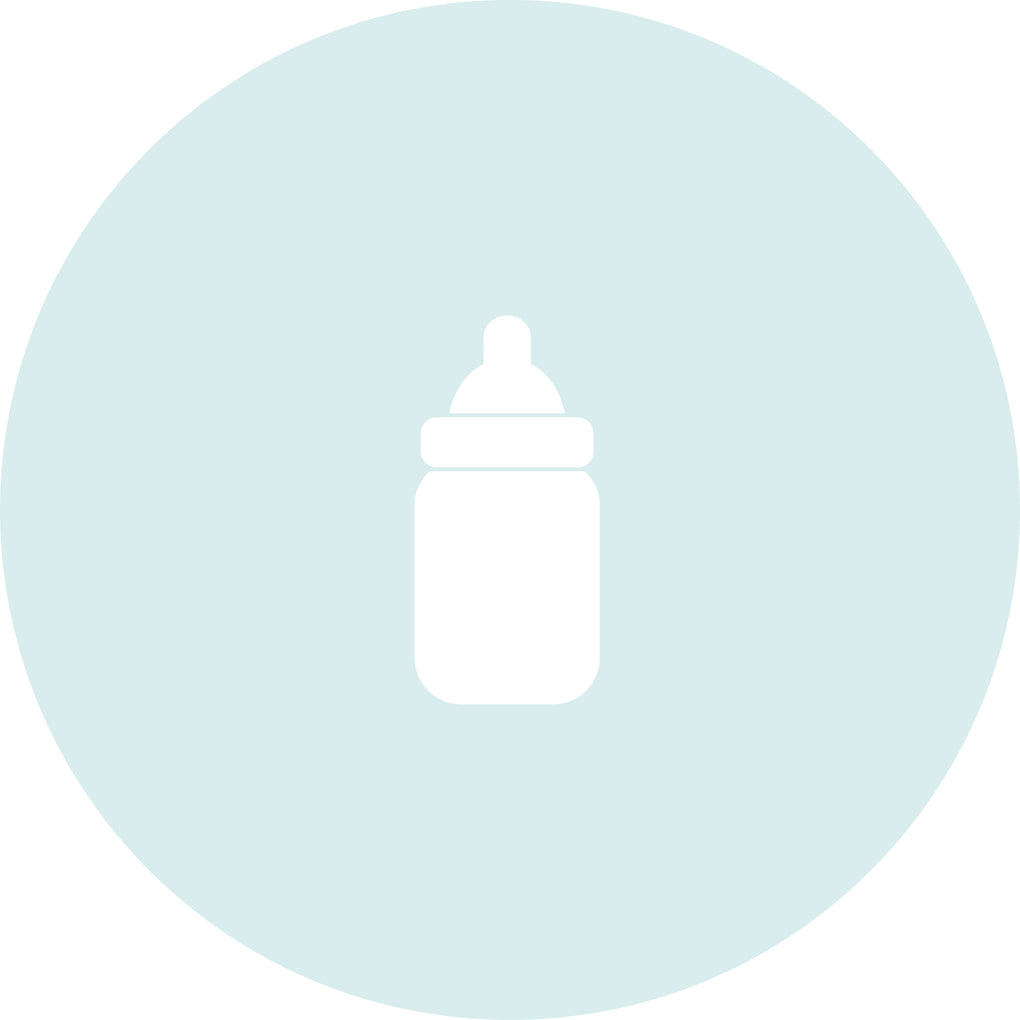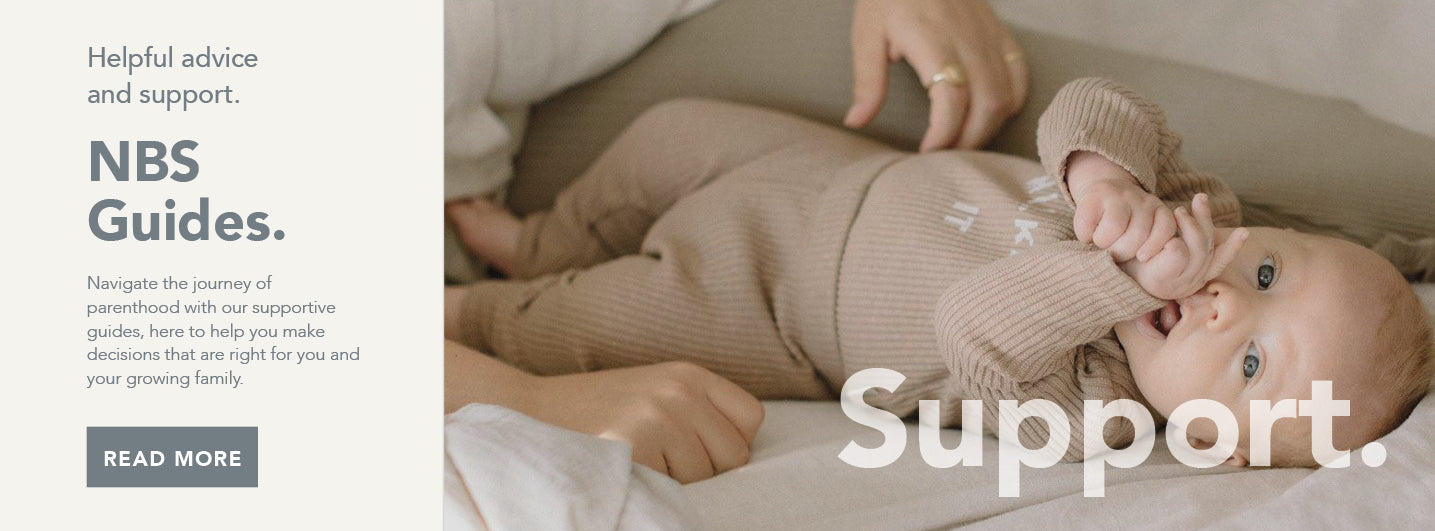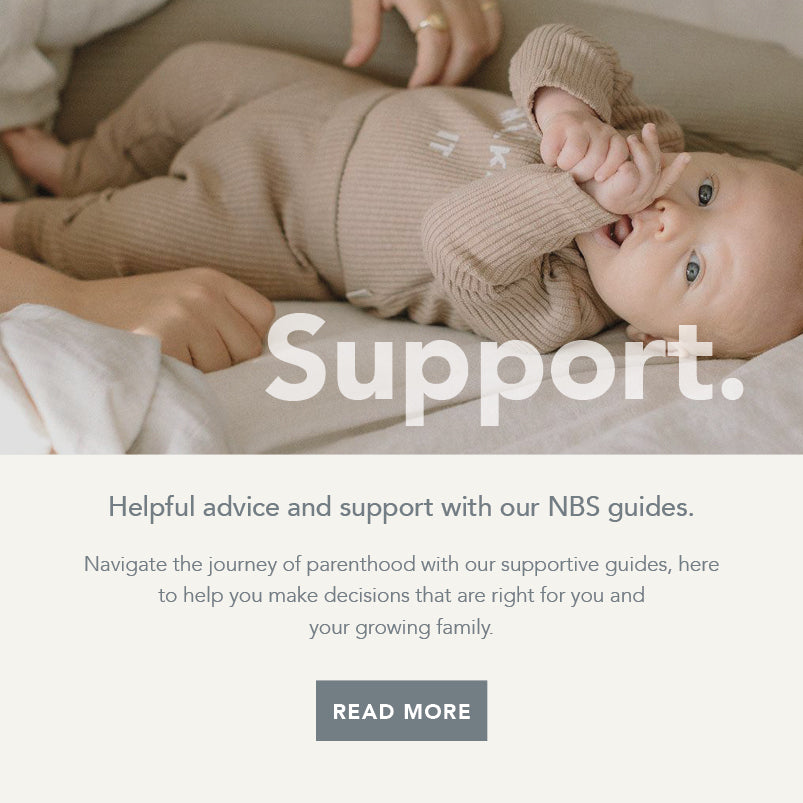Winding down after periods of summer travel, seasonal shifts or holiday disruptions can be hard work, especially for a little one.
While we know that disturbing a little one's sleep their sleep routine is sometimes completely unavoidable, it often leads to an over-stimulated baby and overly tired parent, so it’s important to consider how to get family life back into rhythm.
That’s why our friends at Love To Dream are sharing a few simple steps to help your little ones return to the calm and comfort of their home sleep patterns.

What is the 3-step sleep cycle?
To ensure your little one is getting the best sleep schedule as possible, it's important to create a simple home routine to follow. This routine includes setting up an ideal sleep environment and responding accordingly during each stage of their afternoon, evening, and night-time cycle.
The 3-step sleep cycle forms the basis of this routine and when broken down, covers sleep, feed, and uptime. It means that once your little one sleeps, you feed them when they wake and manage their playtime while they’re awake so that this sets them up for a good sleep once again.
Establishing a routine isn’t difficult but making it stick can be! So, here’s some tricks and tips on how to stay on track and encourage a better quality of sleep for them and improve yours too…

Ideal sleep environment
Where your baby sleeps and what their snooze-space comprises of can make all the difference to their quality of sleep.
Even infants can have their sleep disrupted if their environment is unfamiliar so it’s always a good idea to have a well-established, safe-sleep space for them to return to when they are back home.
If their established sleep space is mobile, for example, a moses basket, try to avoid moving them round the house as much as possible. This then helps to signal to a little one “when I’m put in my bassinet or crib, it’s time to sleep”.
Plus, it also helps to give your baby a strong and positive sleep association with their own sleep space, which will continue as they grow.
Afternoon/evening routine
Throughout the day, a little one will have their periods of sleep interrupted by uptime. During uptime you’ll feed, burp, change, cuddle and play, then get your little one ready for the next nap. This routine is key to helping your baby understand that the day is coming to an end, and it will soon be time to sleep.
We recommend your little one's last nap should finish by 4.30pm to help ensure they’re tired enough to drift off into a deeper sleep when it’s bedtime. After 4.30pm, they’ll have their last period of uptime for the evening, and here you’ll want to add bath time to the routine around an hour before sleep time.

Baths are a great way for little ones to relax and soothe, as well as indicate the day is starting to wind down and it’s time to get snugly for bedtime.
Bath time should then be followed by even more calming activity to promote drifting off to sleep. Bright lights from TV screens or tablet/phones should be avoided as they stimulate the brain and reverse all your hard work.
Instead, playing relaxing music, or reading a book to them will help to calm both mind and body. Reading aloud to a baby can also stimulate brain development and soon they'll have favourites which will be familiar, comforting and something they subconsciously look forward to.
Night time routine
Lastly, thinking about how to re-establish their night time routine will be a blessing in getting baby into their sleep cycle. The night-time period covers the next 12 hours or so which focuses on your little one reaching deeper, higher quality stretches of overnight sleep.
Newborns naturally need to sleep and wake throughout the night until they're around 6 months old. It's best to avoid waking them on a strict schedule for feeds, allowing them to have longer, uninterrupted periods of sleep.
When feeding throughout the night, spacing them out will instead encourage fuller feeds for a full tummy, so they sleep longer. The sleep and feeding pattern should then start falling into place over time and the periods of uninterrupted sleep should increase.
It’s important to note that not every waking moment will be hunger related, so try not to rush if you hear them stir as this could encourage snack feeding which results in shorter bursts of lower quality sleep.
Simply wait and listen if you hear them moan or groan as they may just be moving from one sleep cycle to the next. It may even be that they need nappy change or they’re too cold.

Maintaining the optimal body temperature is essential. You don't necessarily need the heating on all night but to boost the temperature of a room is always a good idea if it is a particularly cold day.
Follow safe temperature guides and on those colder days, layering is important. For warmer months, less layers and more air circulation can help.
If you want the best of both worlds, transitional sleep swaddles like the Love To Dream Bamboo bag allows for arm-free swaddling with a single layer of fabric to reduce risk of overheating.
Putting it into practice
And that’s all there is to it! Follow these simple tips by creating an ideal sleep environment for your little one, managing their afternoon and evening routine, and ensuring their night time routine is calm and relaxing.
Pretty soon, the hurried holiday disruptions will be a thing of the past, and your baby will be right back to their familiar sleep cycle - and so will you.


























